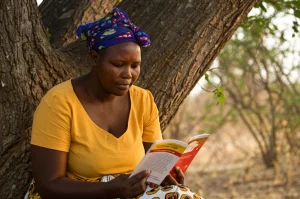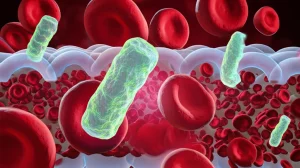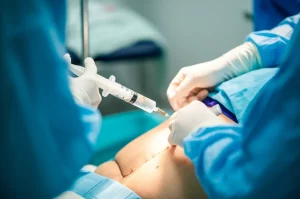DBS vs. Plasma: Unlocking HIV Viral Load Testing in Ethiopia
Hey there! Let me tell you about something pretty cool happening in the world of HIV monitoring, especially in places where getting fancy lab work done isn’t always a walk in the park. We’re talking about HIV viral load testing – basically, counting how much of the virus is hanging out in someone’s blood. This is super important for knowing if treatments are working and keeping people healthy.
Now, the gold standard for this test has always been using plasma, which is the liquid part of your blood. It’s great, but getting plasma samples just right can be tricky. You need proper mixing with anticoagulants, and then you need to keep it cold – like, *really* cold – for storage and transport. Plus, not every clinic, especially in more remote areas, has all the bells and whistles needed for plasma processing.
Enter the Dried Blood Spot (DBS)!
Imagine just putting a few drops of blood onto a special filter paper and letting it dry. That’s a DBS sample! These little spots are way more stable at room temperature and much easier to transport. This got folks thinking: could DBS be a game-changer for monitoring HIV viral load, especially in places like Northwest Ethiopia, where accessing those specialized facilities can be tough?
That’s exactly what we wanted to figure out in this study. We aimed to compare how well DBS samples stacked up against the traditional plasma samples when measuring HIV-1 viral load using a specific, widely used lab test called the Roche COBAS AmpliPrep/COBAS TaqMan assay.
Putting the Study Together
So, we set up shop at an HIV Treatment Center in Northwest Ethiopia between March and July 2020. We looked at 48 people living with HIV who were already on treatment. For each person, we collected a sample of venous blood. From that single collection, we prepared *two* types of samples: the standard plasma and the dried blood spots on filter paper.
Think of it like this: we got the blood, spun some of it down to get the plasma (and popped that in cryovials), and put a few drops of the rest onto special paper for the DBS. We let the DBS samples dry properly, then packed them up with some silica gel to keep them nice and dry. Both the plasma aliquots and the DBS samples were then stored frozen until it was time for testing.
The Lab’s Fancy Footwork
Once we had our paired samples all prepped and stored, it was time for the lab work using the Roche COBAS system. This is a pretty automated process, which is great for consistency.
First, we had to get the HIV-1 RNA (that’s the genetic material of the virus) out of both the plasma and the DBS samples. For the DBS, we had to punch out little circles from the blood spots. The Roche system uses a clever silica-based method to grab onto the RNA and separate it from everything else.
Next came the amplification and quantification steps. The system basically makes millions of copies of the HIV RNA and a special internal standard (called HIV-1 QS) using enzymes. As it makes copies, fluorescent signals are generated, and the machine measures these signals to figure out exactly how much virus was there to begin with. The Roche COBAS TaqMan assay can detect viral loads between 20 and 10 million copies per milliliter. Anything below 20 is considered “target not detected.”
We ran controls – negative, low positive, and high positive – alongside our samples to make sure everything was working correctly. Safety was, of course, a top priority, with all work done under controlled conditions following strict guidelines.

Who Were We Looking At?
Out of the 48 people in our study, most were women (about 64.6%). Their ages ranged quite a bit, from 12 all the way up to 58, with the average age being around 34. A good chunk of the participants (over half) were over 36.
Clinically speaking, most were in the early stages of HIV (Stage I, nearly 90%). And encouragingly, the vast majority (over 90%) reported having good adherence to their ART medication. This is key because sticking to treatment is crucial for keeping the viral load low.
So, What Did We Find?
We tested all 48 pairs of plasma and DBS samples. When we looked at the raw detection rates, things were a little different between the two sample types, especially at the lower end.
* For DBS: About 70.8% had viral loads between 20 and 1000 copies/mL, and 8.3% were above 1000 copies/mL. About 20.8% were “target not detected.”
* For Plasma: About 43.8% were between 20 and 1000 copies/mL, and 6.3% were above 1000 copies/mL. A higher percentage (50%) were “target not detected.”
This difference in the “undetected” category is interesting and something to keep in mind, possibly related to the smaller blood volume in a DBS sample compared to plasma.
But the *real* question was: how well do the *quantitative* results match up when the virus *is* detected?
We crunched the numbers using statistical tests. A paired t-test showed a mean difference of about 0.66 log copies/mL between the DBS and plasma measurements (DBS tending to be slightly higher on average).
More importantly, we looked at the association and agreement. Pearson’s correlation analysis showed a *strong* linear correlation between the DBS and plasma viral load measurements (an ‘r’ value of 0.796, which is pretty solid!). This means that generally, if the viral load was high in plasma, it was also high in DBS, and if it was low in plasma, it was low in DBS. This correlation was statistically significant (p elt; 0.001).

We also used a Bland-Altman plot, which is a great way to visualize the agreement between two different measurement methods. This plot showed a *high level of agreement* between the DBS and plasma viral load results. While there was that slight average difference we mentioned, most of the individual sample differences fell within the acceptable range of agreement. We also checked for proportional bias (whether the difference between the two methods gets bigger or smaller depending on the viral load level) using linear regression, and thankfully, we didn’t find any significant bias (p = 0.360).

Why This Is a Big Deal
Okay, so what does all this statistical goodness actually *mean*? It means that for quantitative HIV viral load testing using the Roche COBAS assay, DBS samples give results that are highly correlated and show a high level of agreement with the standard plasma samples.
Why is this exciting? Because HIV is still a major global health challenge, and monitoring viral load is absolutely critical for managing the infection, ensuring treatments are working, and preventing the development of drug resistance. The WHO even has ambitious goals to diagnose, treat, and achieve viral suppression in 95% of people living with HIV by 2030.
But, as we talked about, the challenges with plasma samples – the need for cold chains, specialized equipment, and prompt processing – can be huge barriers, especially in resource-limited settings like many parts of Ethiopia.
This is where DBS shines!
- Easier Collection: It’s less invasive than collecting a whole tube of blood for plasma.
- Stability: Those little spots are way more stable at room temperature, meaning they don’t need to be kept frozen during transport.
- Transportation: Shipping dried paper spots is much simpler and cheaper than shipping frozen plasma.
- Decentralization: Samples can be collected in basic clinics far from a central lab.
Our findings, supported by studies from other parts of the world using various assays, suggest that DBS is a scientifically reliable alternative for measuring HIV viral load. This could be a game-changer for scaling up viral load testing coverage, making it accessible to more people, regardless of where they live. Imagine quicker turnaround times and improved workflow in labs because sample handling is simpler!
A Quick Look at the Good and the Not-So-Good
The big strength of our study is that it directly addressed a practical challenge in a real-world, resource-limited setting. We showed that DBS is a feasible alternative right there on the ground.
A potential limitation, however, is that DBS uses a smaller volume of blood compared to plasma. While our study showed good correlation overall, this smaller volume *could* potentially make it harder to detect very low levels of the virus accurately compared to plasma, though the Roche assay is quite sensitive.
The Takeaway
So, wrapping it all up, our study in Northwest Ethiopia found a strong correlation and high agreement between HIV-1 viral load measurements from DBS and plasma samples using the Roche COBAS assay.
Considering how much easier DBS samples are to collect, transport, and store (no need for fancy freezers on bumpy roads!), these findings are a big thumbs-up for using DBS as an alternative for routine HIV viral load monitoring. Adopting DBS could really help boost diagnosis and treatment coverage, getting us closer to those global goals and ultimately helping more people living with HIV live longer, healthier lives. It’s about making critical healthcare tools accessible to everyone, everywhere.
Source: Springer







